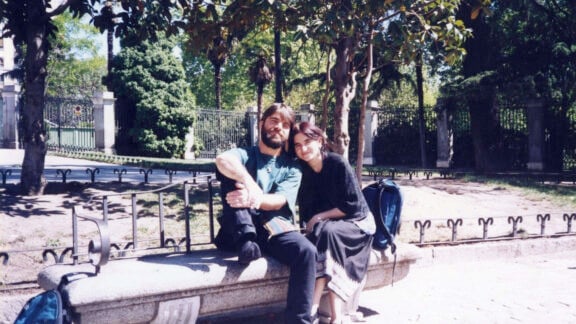Professor Vrasidas Karalis’ book ‘A History of Greek Cinema’ has officially been released with a Greek translation in Greece, just over ten years since it was first published.
The book, which initially came out in English in 2012, presents a detailed account of Greek Cinema concentrated chiefly through Professor Karalis’ experiences with this art form.
The translation job has been long in development and went through lots of work, with interest first stirring around five years ago.
“In the beginning, I was very reluctant to give my permission. The book was written for an international audience and had a personal scope and perspective. Hence the title ‘A History of Greek Cinema’,” the Chair of the Modern Greek Department at the University of Sydney told Neos Kosmos.
“I didn’t pretend to write the history of Greek cinema. I think that the personal perspective gave a certain edge and interest to the central argument of the book. The publisher accepted immediately the proposal for publication in 2019, if I remember well.”
Professor Karalis spoke with Dr Achilleas Dellis, a film critic in Athens who translated the book, about certain tricky terms and expressions, considering the entire process a “very demanding and difficult task”.
“The problem was and still is that we don’t have adequate Greek terminology to render many technical expressions. Usually, translators revert to writing in Greek the original terms, like mise-en-scene, decoupage, etc which in Greek sound really awkward and occasionally ridiculous. My contribution was to make suggestions about certain new terms that could be used,” he said.
“Dr Dellis is a distinguished film critic in Athens and it was a great honour for me to undertake the translation of the book. He struggled hard, especially during the Covid lockdowns and I think that he produced miracles in rendering many difficult terms but also in capturing the general tenor of the book’s narrative.”
Professor Karalis stated the book is a “love letter to Greek Cinema”, outlining the importance of Greek films in the social integration of post-war Greece, with it presenting to the people a visual mythology about their position in history.
“Greek cinema dealt with the lingering traumas of the Asia Minor Catastrophe, the German Occupation, the Civil War and the mass migration in an almost cathartic way that empowered people and made them feel strong enough to confront the challenges of history,” he said.
“Its most significant characteristic was and still is what I call oppositional aesthetics, a symbolic resistance to social oppression and persecution.”
The professor noted that Greek cinema ascended to great heights compared to its modest means, having been fascinated when uncovering in his research for the book the richness and diversity of all the sources who contributed to its production.
“Greek cinema was made for a small market and with very poor technological infrastructure. However, it managed to transform all its disadvantages to positive attributes establishing a specific visual idiom which in its apogee produced more films that Hollywood itself,” he told Neos Kosmos.
“Not all of them were good but they were honest attempts to depict the changing realities of their society and express the experience of being Greek at specific periods of history.”
In addition to influential Greek filmmakers like Theo Angelopoulos, Dimitris Gaziadis and Michael Cacoyannis, Professor Karalis found to his surprise that many involved were also non-natives.
“In reality, the whole of Greek cinema is the child of the Hungarian, Joseph Hepp, who went to the country in 1908 and established the cinematic tradition it as we know it today. Others include the great English cinematographer, Walter Lassally, who received an Oscar for his Zorba the Greek, and the Italian, Giovanni Varriano, who visualised some of the most characteristic “Greek” images when he worked with Nikos Koundouros,” he said.
“There is also the neglected presence of women cinematographers, like Maria Plyta, Tonia Marketaki, Frida Liappa amongst others who produced remarkable films by international standards.”
When asked what makes cinema such an engaging and imaginative medium for people, Professor Karalis said:
“It is what we call the suspension of disbelief, the ability of the cinematic images to transport you elsewhere, to show different possibilities of existence and ultimately of creating a new vision about our world, our society and our self.”
The USYD professor elaborated that certain aspects of the book would be strange to Greek-Australians who are not as familiar with the country’s complex history as a people and culture.
“Greek-Australians will find certain aspects of the book strange because a rather “touristy” image of Greece remains dominant. I tried to foreground multiple aspects of the Greek cinematic experience in a self-critical but positive manner,” he said.
“We have to see Greek culture in general not through the eyes of our holidays in the country but as the outcome of a real and actual human society with its ups and downs, positives and negatives, achievements and failures.”
Professor Karalis ended with a final hope that future generations of Greek-Australians will learn and value the vast history of Greek cinema.
“I hope that the young people, especially of the second and third generations, will come to appreciate the wonderful efforts of some many people to translate their social experiences to visual images and express the central questions that inspired the creative minds of the Greek society.”









